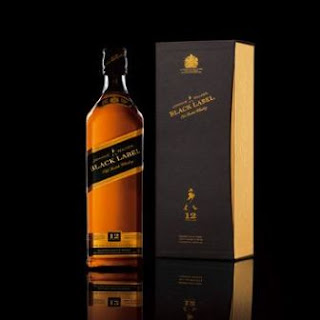
The world of whiskey can be difficult to navigate. Not only are you required to choose from different nations, regions, brands, and ages; you also have to know how you like your whiskey and the proper way to order it. This is important for a few reasons. First, it's important because you want to make sure that the whiskey that the bartender places in front of you is the whiskey that you wanted, especially if you're about to spend $20 on the glass. Second, you may have to walk the bartender through the process. I cannot begin to count how many times I have encountered a bartender who had no idea how to pour, what glass to use, what scotch was, or what I meant by "neat" (sadly, bar tending has become more and more of a profession where no education is ever required or offered, something I addressed when I managed a pub. It is all too common to encounter a bartender who has enough trouble pouring a Greyhound). Lastly, who doesn't like being able to order whiskey like a pro, gaining a nod of recognition from the other whiskey drinkers in the pub?
I began to drink whiskey when I was on a yacht racing team in Los Angeles. After the races, the crew would meet for drinks in the yacht club where we would split into smaller groups. Those of us before the mast would drink local beer, but the ultra-successful skipper, navigator, and trimmer would sip scotch - Macallan 12 to be exact, coming up in a future review. I saw these professional, successful people drinking whiskey and I wanted a reason to sit at their end of the table. It wouldn't have been enough to order a shot of cheap bourbon to gain acceptance into their circle, I had to really learn about whiskey and avoid any potential pitfalls in the ordering process. It also didn't hurt to learn about whiskey in general. The point is that knowledge is power when it comes to whiskey.
Since the choice of whiskey is up to you (and hopefully my reviews help you decide), it's important to know how you want it. Basically you have three options: neat, on the rocks, or with a splash of water. Neat means no ice, you may sometimes have to explain that, some bartenders are not familiar with the word. On the rocks means with ice, and a splash of water is just that - a splash of water. So what's the difference, really?
Neat: When you drink your whiskey neat you taste the
whiskey in its true natural form with all of the original distillery
characteristics and flavors from the cask in which it has been
maturing. I would recommend always trying your whiskey like this first, you can always add water or ice but you can't take it out. This is considered the old-school way of drinking whiskey, my preferred method.
On the rocks: Ice inhibits the flavors a bit as it makes the temperature of the whiskey drop rapidly. It will be a more refreshing drink
and calm the burn of alcohol, but can make the whiskey taste dull and
flat.
The aromas and taste will only start to open up and reveal their full
characteristics once the whiskey starts to warm up to room temperature.
Splash of water: By adding a few drops of water to a whiskey you can open up different,
new and subtle flavors that you previously had not experienced.
This is especially true when drinking whiskies that have
higher alcohol levels (these can be up to and over 120 proof in some
cases).
With higher-proof whiskey the alcohol and resulting burning in your
mouth can overpower the flavors. By adding some
water, this dilutes the alcohol and reduces its effect,
giving both the flavors a chance to come to the surface. I would definitely recommend distilled water if you have it, that way you will not add any other flavors that may come from the water. Bad-flavored tap water can ruin you whiskey.
When ordering whiskey I will give you the best method I have learned, being both a whiskey drinker and a former bartender. Call for your whiskey in this order: vessel, brand and age, and how you want it. For example, use phrasing like, "a glass of Glenlivet 12 on the rocks" or "a glass of Jameson neat". I recommend saying that you want a glass, because an uneducated bartender might pour you a shot, which would be bad. Order the brand
and the age (if applicable) because the bar may offer several varieties of that brand, maybe a 15- and 18-year option. If you just order a "scotch on the rocks" you may wind up with anything and you might look a little silly. Lastly it is obviously important to specify how you would like it, but make sure the bartender hears you. If you like it neat but fail to say so and get it on the rocks, that can be a problem. You may want to watch the process to ensure that the bartender uses the correct whiskey and that you get the whiskey in an appropriate container. I have seen good whiskey that was meant for a tumbler wind up in a shot glass, a martini glass, or even a pint glass filled half-way with whiskey. Feel free to (tactfully and politely) correct your bartender, most likely they would appreciate a little education anyway which will help them in the future. These people deal with rudeness all day so try not to add to it.
Happy tasting,
Charles


























































